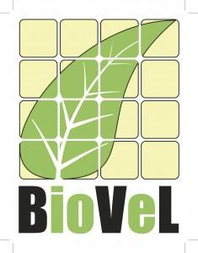
Data analysis is a complicated and time-consuming process. Like a craftsman, you require a set of tools that source, reformat, merge and analyse data. Using these tools manually in a workflow can take weeks. Then, when you finally get the workflow working, you often need to run it again with a new set of inputs and parameters. What if there were a piece of software that could couple all these tools together and then run it all over again at a click of a button?. This is what Taverna Workbench does. Taverna, changes a time-consuming job with multiple tools into a single machine that does all the work seamlessly.
Taverna Workbench is one of the tools that supports the BioVel project with their stated aim of creating a "virtual e-laboratory that supports research on biodiversity issues". Taverna, by itself, is like a conductor without an orchestra. The power of Taverna is in the flexible coupling together of web-services, scripts and all kinds of processing engines to create workflows. For example, an obvious use case is the coupling together of the webservice from GBIF with a niche model engine and rerunning of the workflow using different projections of future climate change. However, Taverna can be used to simplify the processing of practically any digital data. Many ecologists use R as their primary statistical software. R can be run from within Taverna, but Taverna helps you couple its running to pre- and post-processing so that it can be run more easily.
Taverna is widely used among phylogeneticists and bioinformaticians, but other disciplines are rapidly adopting it. Another, unique and powerful feature of Taverna is that people can share, distribute, and collaborate on their workflows. On the website myExperiment.org scientists post their workflows for others to use, critisise and improve upon. The website works like a social network, enabling users to create groups, "like" favorite workflows and exchange ideas. You could spend the time to program your own links between services, but Taverna lets you do this easily without sacrificing innovation and adaptability.
One of the important features of Taverna is the seamless way it allows users to use webservices. There is a growing list of webservices for biodiversity from organisations such as GBIF, EOL and EU-Brazil OpenBio. One of the big issues with webservices is that they are, almost by definition, invisible to human users. Therefore, how do you find out that they exist?. This is where biodiversitycatalogue.org comes in. It allows scientists to discover webservices, but also describes how they work and their input and output formats. The pro-iBiosphere project has helped to improve the catalogue and will help to set priorities for future development. It now recommends the use of the Biodiversity Catalogue as central service registration facility for a future Open Biodiversity Knowledge Management System.
Taverna is a relatively new system to the Biodiversity community and through the BioVeL project its user-base is growing rapidly. Furthermore, people are finding new uses for it all the time.
On 5th December 2013, BioVel organised a workshop on Taverna at which pro-iBiosphere was represented. One potential use-case that is of interest to pro-iBiosphere is in the automated markup of text. Some aspects of automated markup are common to many texts, such as the identification of scientific names. On the other-hand there are other aspects that are specific to particular texts, such as the identification of treatment boundaries and language specific features. Taverna may be used to link generic services with custom scripts to significantly reduce the time it takes to markup text. Workflows could be created for one particular publication and then tweaked to work for another.
The possibilities of Taverna are almost limitless. It is just the glue, and you decide what you stick together. You might think the Taverna sounds like a quiet place for a drink, whereas, it is really the factory floor of data processing.
By Quentin Groom (National Botanic Garden of Belgium)





 pro-iBiosphere wiki platform
pro-iBiosphere wiki platform
 RSS news
RSS news Print this article
Print this article
